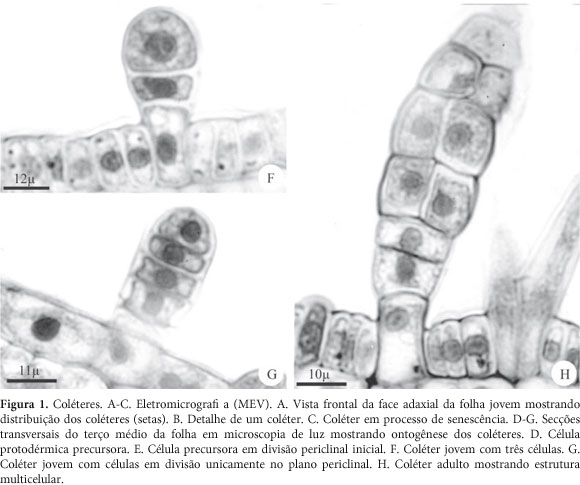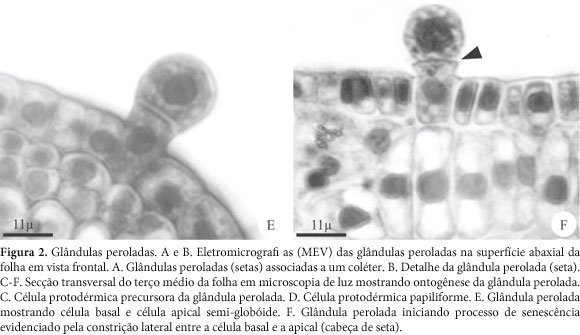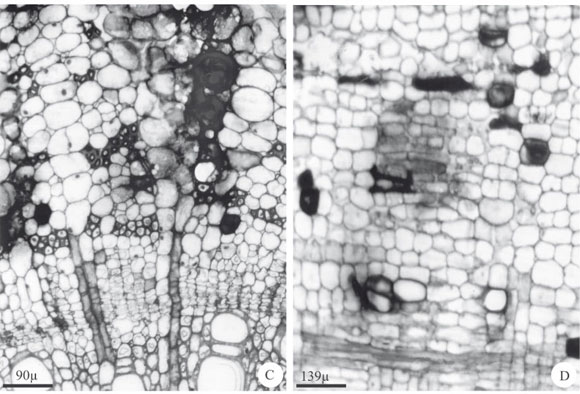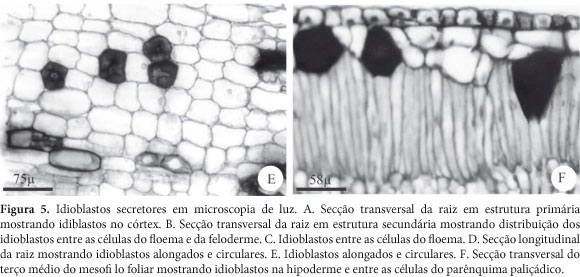This work studied the mucilage-secreting structures of Hibiscus pernambucensis using light and scanning electron microscopy. Known as guaxima-do-mangue, algodão-do-brejo and embira-do-mangue, this species is a native shrub that occurs in mangrove and restinga along the Brazilian coast, and is important in the production of textile fibers and cellulose, provides abundant mucilage that is used medicinally like other Malvaceae species, and has tannins. The results of this work found colleters, pearl glands, long-stalked secretory trichomes, ducts, cavities and idioblasts. The colleters occur on the shoot apices, stipules, leaf primordia, leaves, young sepals and petals. The pearl glands are present in the adaxial and abaxial surface of the leaf primordia. The ducts and the cavities occur in the vegetative and reproductive shoot apices. The idioblasts occur in the roots, both in primary and secondary stages of development, and in the leaf mesophyll. The secretion of the different secretory structures is made predominantly of acids and neutral polysaccharides, proteins, lipids and phenolic substances. The presence of external and internal mucilage-secreting structures in all plant organs, at different stages of development, represents an important adaptive mechanism to restinga and mangrove environments.
anatomy; Hibiscus pernambucensis; histochemistry; mucilage; restinga













